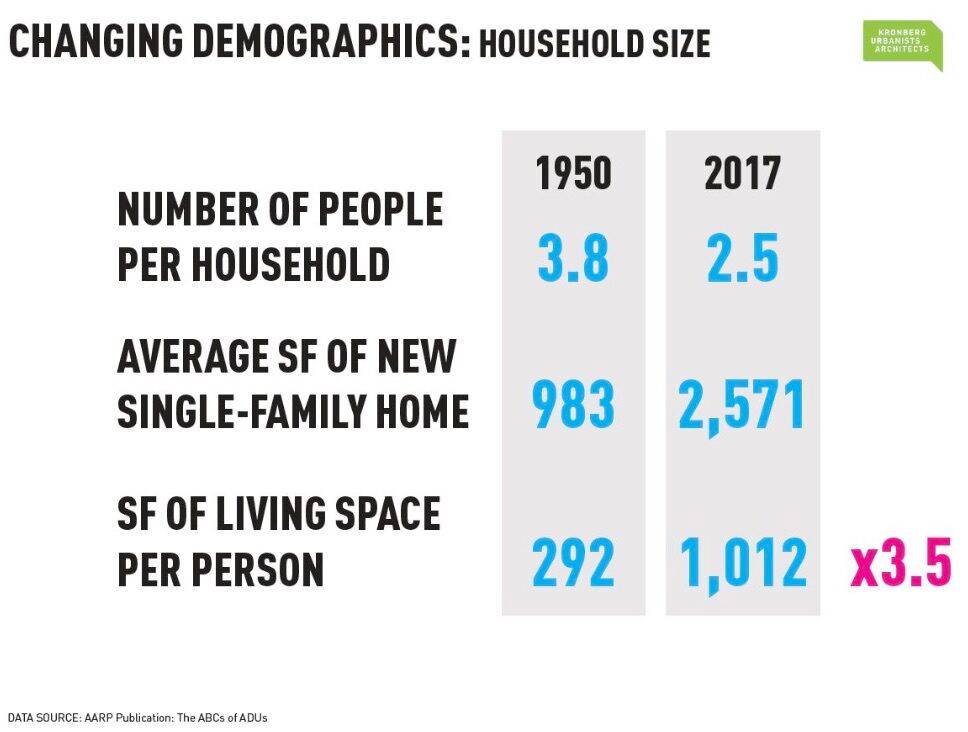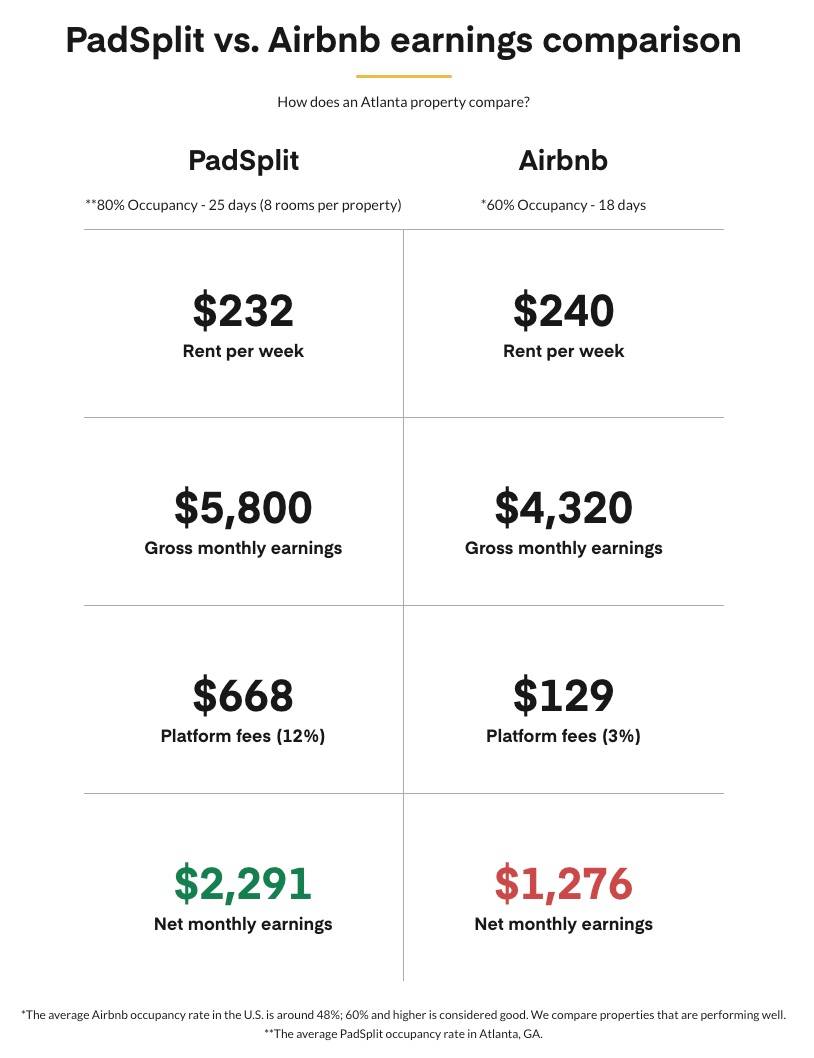This article is presented by PadSplit. Read our editorial guidelines for more information.
In the ever-changing landscape of the sharing economy, the concept of home sharing has undergone significant transformations. With the rise of short-term rental platforms like Airbnb, travelers and hosts alike embraced the idea of unique, short-term stays. However, the question that now looms large is whether the Airbnb dream is dead.
While challenges persist, the evolution of the industry tells a different story—one of adaptation and innovation. Real estate investors, in particular, are exploring new avenues, with a growing interest in mid-term rentals.
Is Airbnb Down?
When Airbnb burst onto the scene, it was hailed as a disruptor, reshaping the way we travel and experience new places. Homeowners could monetize their properties, and travelers relished the chance to stay in cozy, local spaces. However, the dream of easy, short-term profits has faced hurdles, from regulatory battles to concerns about neighborhood disturbances.
Now, every few months, Airbnb gets dragged on the internet. To start things off, this past year, frustrated hosts dominated host forums with claims of “Airbnbust”—describing their low occupancy rates and drop in bookings. Then, customers complained about Airbnb service fees so much that it became a meme. And recently, Airbnb CEO Brian Chesky declared to Bloomberg that “Airbnb is fundamentally broken.”
Airbnbust? Not for Brian Chesky
So, what’s really going on with Airbnb? Let’s look past the memes and clickbait headlines and look at the numbers. In Q3 2023, the Airbnb platform garnered 113 million night and experience bookings (up 14% year over year), valued at $18.3 billion (up 17% year over year) in gross booking value. The company extracts a fee from each booking, which helped net them $3.4 billion in revenue (up 18% year over year). The company is clearly strong and growing.
So What Are Airbnb Hosts Complaining About?
When we shift our focus to individual hosts in the U.S., a different picture emerges. According to AirDNA, STR occupancy decreased to 54.8% for 2023 (down from 57.9% in 2022), while available listings have spiked 17.2% year over year, reaching 1.54 million properties. This increased competition is forcing hosts to compete on price and quality, which benefits Airbnb guests but hurts host margins.

Not All Hosts Are Equal
In the Airbnb marketplace, success is not evenly distributed among hosts. Top hosts will continue to rank high in the Airbnb algorithm and garner high occupancies, while lower-tier, undifferentiated hosts may feel the impact more profoundly.
In our current market with base mortgage rates of >7.5%, new Airbnb investors are particularly vulnerable, as they need to earn even more to cover high-debt service/mortgage payments, platform fees, property management fees, maintenance, taxes, and insurance.
The Rise of Mid-Term Rentals
Amidst the challenges faced by short-term rentals, a new trend has emerged: the rise of mid-term rentals. Investors are finding opportunities to cater to a different demographic: individuals seeking housing solutions for a few months to a year as affordable housing has become scarce. Sites like PadSplit have capitalized on this demand, offering affordable, furnished housing options that bridge the gap between traditional leases and Airbnb-style stays.
Here are some benefits of mid-term rentals for investors:
- Steady income: Unlike the unpredictable nature of short-term rentals, mid-term rentals provide investors with more stable, reliable income streams. With longer lease durations, property owners can better forecast earnings.
- Reduced vacancy rates: Mid-term rentals often attract tenants who need accommodation for work-related purposes, such as business travelers, interns, or contractors. This consistent demand leads to lower vacancy rates, ensuring more stable occupancy.
- Lower operational costs: With longer stays, property management becomes more streamlined. Investors can reduce costs associated with cleaning, turnover, and guest acquisition, making mid-term rentals financially appealing.
- Compliance and regulation: Many cities have introduced regulations to curb the growth of short-term rentals. Mid-term rentals, falling within the boundaries of traditional leasing, often face fewer regulatory hurdles, providing investors with peace of mind.

Embracing Change: The Future of Home-Sharing
As the real estate landscape continues to shift, investors and hosts must adapt. While the classic Airbnb dream of short-term stays remains popular, the rise of mid-term rentals represents a new frontier. By diversifying their portfolios and exploring innovative housing solutions, investors can navigate the changing industry landscape while ensuring sustainable, long-term profits.
The Airbnb dream is no longer possible unless investors own properties with luxurious amenities and features. Unless you own a tree house or a property on Catalina Island, don’t expect too many bookings. The emergence of mid-term rentals highlights the industry’s adaptability and resilience to this change.
As investors and hosts explore these new opportunities, the sharing economy continues to thrive, offering a range of options for both property owners and tenants. By embracing change and staying ahead of the curve, the dream of profitable, community-focused housing solutions lives on.
The Beautiful Thing About Turbulent Market Conditions
Turbulent market conditions may be difficult, but they shake out the not-so-serious investors and open up more opportunities for those who want to capitalize while facing less competition.
For anyone tracking the current investing landscape, it’s not a surprise that we are in a very difficult market, and although there is some hope out there, most signs point to it getting a little worse before it gets better.
We created PadSplit to solve a big problem: affordable housing. This problem is not going anywhere and is only getting worse. You can spend a day pulling data on every single-family rental investment strategy out there, and you will quickly learn that no matter what trend line you look at, the one that is going to stay constant is the need for affordable housing:
- The economy gets worse? We need affordable housing.
- The economy gets better? We need affordable housing.
- Interest rates go up? We need affordable housing.
- Interest rates go down? We need affordable housing.
- Housing prices go up? We need affordable housing.
- Housing prices go down? We need affordable housing.
Look at each of these, and factor in a historical percentage swing to see what that does to the rental price of a studio or one-bedroom apartment. You will see that a rent-by-the-room model still offers a more affordable, better solution for low-income earners.
Hosts Seeking an Exit
At a recent real estate conference in Orlando, one of our team members met an Airbnb investor, Sarah, who was looking for an exit. Her property in Orlando, a top vacation destination, was negative cash flowing $700/month!
They talked through three options: compete, sell, or convert:
- Competing: Sarah felt frustrated about the opacity of the Airbnb search algorithm and tried other listing sites like VRBO, but that didn’t move the needle.
- Selling: This was not attractive because she was unlikely to break even on the asset purchase and capital expenses (renovation, furnishing, and landscaping) that were invested. This was her last resort.
- Converting: Sarah was interested in switching from short-term rentals to mid-term rentals to achieve a higher net occupancy rate.
Mid-Term Rentals Are the Best Exit Strategy for Underperforming Airbnbs
While top hosts with hundreds of reviews on Airbnb continue to perform well, newer and underperforming hosts are looking for the exit as poor Airbnb reviews from hosts are becoming more commonplace. We believe mid-term rentals are the best exit strategy, which is why we’ve seen a big spike in Airbnb hosts converting their properties to our platform.
Of course, not all STR and vacation properties will make good mid-term rental homes. Our sweet spot is single-family properties in major metro areas with underutilized living space. On average, our hosts earn 2.5x more than traditional single-family rentals and 33% more than Airbnb while serving essential workers in their communities.
Learn how PadSplit compares to Airbnb.

The U.S. Needs 7 Million More Affordable Homes
The numbers speak for themselves: The U.S. needs at least 7 million more affordable homes to meet the needs of low-income families. With thousands of households stuck on years-long waiting lists for housing vouchers in virtually every American city, it’s clear that governments cannot solve this crisis on their own. PadSplit aligns incentives between local governments trying to address this problem and millions of existing and potential real estate entrepreneurs who are looking for strong, sustainable cash flows.
While Airbnb quickly created over 6 million listings for vacation rentals, increasing regulation of STRs in major cities like New York and Dallas have cut Airbnb host revenues nearly in half. Potential new taxes on Airbnb in states like California threaten profits even further.
As the CEO of PadSplit, I’m thrilled to see more and more hosts making the switch from short-term rental platforms like Airbnb to joining our network of hosts providing affordable, flexible housing through PadSplit. This shift clearly demonstrates a growing understanding of the affordable housing crisis facing cities across America and a desire to be part of the solution.
Learn more about PadSplit vs. Airbnb.
Explore hosting with PadSplit.
This article is presented by PadSplit

PadSplit is the country’s largest coliving marketplace that provides housing with more than 10K rooms across 13 states and more than 24K members housed so far. With PadSplit, investors can build financial freedom with outstanding real estate returns and show that they care about their community by creating affordable, flexible housing.
Note By BiggerPockets: These are opinions written by the author and do not necessarily represent the opinions of BiggerPockets.
